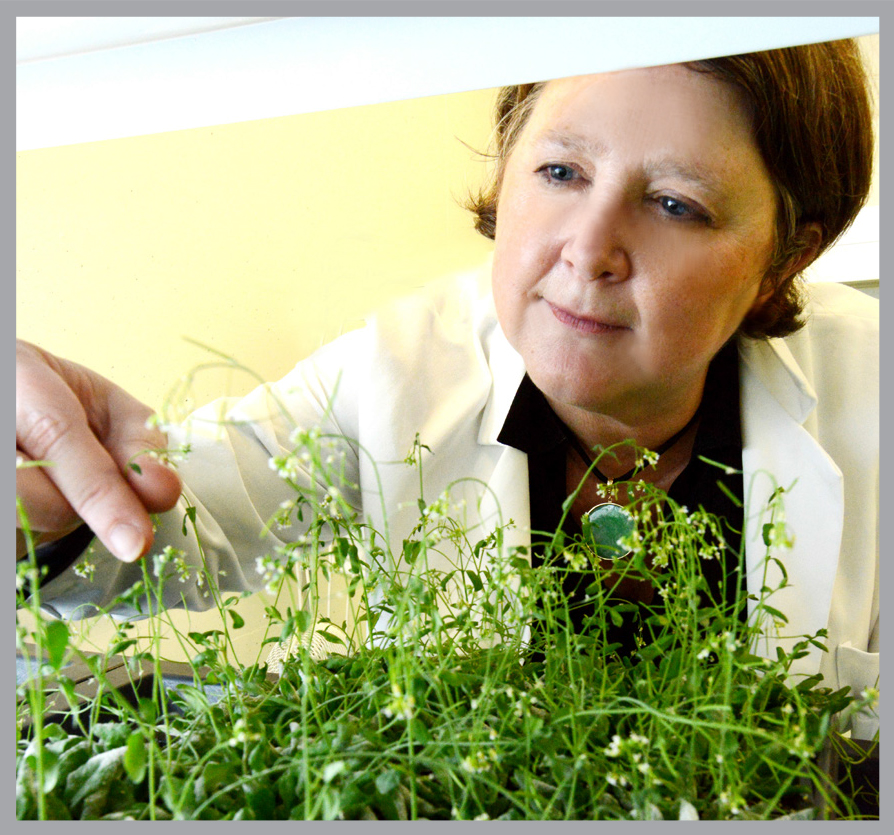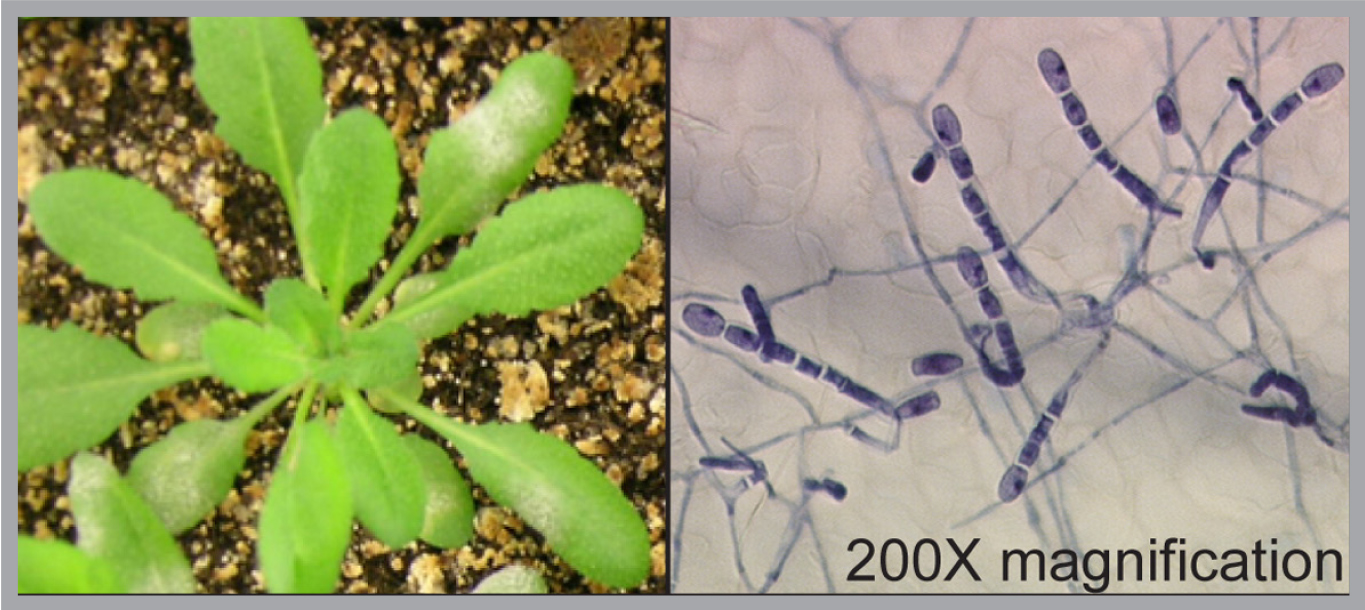
Mary Wildermuth
Plant and Microbial BiologyMary Wildermuth is a Professor in the Department of Plant and Microbial Biology.
Project Description
Alteration of Parasite-Induced Plant Processes to Promote Durable Disease Resistance and Enhance Agronomic Product Traits
Powdery mildews are widespread plant parasites with a devastating impact on California agriculture. Currently, extensive chemical treatments are used to limit powdery mildews. Using Arabidopsis thaliana, a small flowering plant that facilitates molecular studies of plant-pathogen interactions, and lasers to isolate specific cells at the infection site, the Wildermuth group identified plant processes that the powdery mildew fungus manipulates to promote its proliferation. Specifically, endoreduplication, an altered cell cycle that is associated with enhanced metabolic capacity, was induced in plant cells underneath the fungal feeding site. Targeted reduction of this process and its downstream impact on metabolism limits powdery mildew proliferation in Arabidopsis and may promote durable powdery mildew resistance in agronomic species. By contrast, increasing endoreduplication or its impacted metabolic pathways could enhance size and nutrient content of specific commodities such as tomato fruit, as well as enhanced bioproduction of specialized plant metabolites. Mary will take the initial translation of this research and apply it to relevant agronomic species and bioproduction platforms, which will allow for the prioritization and formulation of strategies for commercialization.
Mary Wildermuth’s Story
It looks harmless enough – a light dusting like baby powder sprinkled on the leaves. But as rose lovers know, powdery mildew can attack new buds and shoots, stunt growth and distort plant development.
If not controlled, the fast spreading fungus can cause billions of dollars of crop damage in California. For example, powdery mildew is the most significant disease affecting grapes in California, with all productive acreage treated to help minimize loss. Borne by the wind, its spores race through fields and can easily damage a season’s crop, resulting in losses of 30 percent or more.

Growers combat powdery mildew with sulfur, fungicides and other deterrents, but treatment is costly, and timing is difficult. But a much more precise strategy may be on the way.
Using highly refined dissection of infected plant cells, coupled with genetic analysis, Berkeley’s Mary Wildermuth identified genes critical to a plant’s response to mildew attack. The research by Wildermuth, Associate Professor of Plant and Microbial Biology, points the way to plant breeding strategies that can weaken powdery mildew’s grip.
The research has focused on a plant in the mustard family, known scientifically as Arabidopsis thaliana . Arabidopsis is popular in plant molecular genetic studies because it has a small, sequenced genome and short life cycle.
With the support from the Bakar Fellows Program, Wildermuth is applying her discoveries in Arabidopsis to protect commercially valuable crops. “We’ve already identified the parallel genes in a number of important crops. By targeted breeding to limit these genes’ powdery mildew-promoting effects, we should be able to protect plants without extensive chemical treatments.”
When powdery mildew spores land on a leaf, the spore germinates and bores through the leaf surface to make a lobe-shaped feeding structure. The fungus also influences nearby plant cells, manipulating the leaf cell physiology to gain nutrients. A high nutrient supply is needed to support the large fungal network on the leaf surface and the formation of new spores, which propagate the infection.
Wildermuth’s lab used a highly refined technique under an optical microscope – a strategy called laser microdissection – to scrutinize the fungus-plant interaction and focus in on the plant cell housing the fungal feeding structure and the neighboring leaf cells.
“We can see these cells under the microscope and use the laser to cut them out. The dissected cells literally drop into a tube below. It’s quite fun to do.”

The research team isolated the cells and extracted the RNA. They then determined which genes are turned on and which are turned off in specific cells at the infection site versus uninfected cells.
They zeroed in on genes likely to be critical to the infection process, and used plants in which these genes were knocked out in order to see if the plants respond differently to powdery mildew.
The lab identified a set of genes that actually help the mildew fungus steal more food from the plant. The process, called endoreduplication, allows cells in the leaf to increase production of DNA without dividing – one of the few ways cells can increase their metabolism and size, Wildermuth says.
“The fungus induces endoreduplication in the plant cells underneath the feeding structure, and gains access to more nutrients in the leaf,” Wildermuth says. This, in turn, spurs fungal growth and reproduction.
“We showed that if the DNA-enhancing process is blocked, the fungus gets put on a diet, and its proliferation is limited,” she says.
The Bakar Fellowship supports her current effort to determine whether similar genes in grapes, tomatoes and other crops threatened by powdery mildew can be targeted to limit powdery mildew growth. Crop strains in which these genes are less active or even absent could be selectively bred to thwart fungal growth.
Endoreduplication is quite localized in the plant. While it is induced by the powdery mildew to promote fungal growth, other researchers have found it is also part of normal development for certain fruits such as tomato. This suggests a dual strategy: Dampening the genes that control the process in leaves to protect against mildew where the fungus proliferates, but enhancing its activity in tomatoes and other crops to yield bigger, sweeter fruit.
“The novel genes we identified, therefore, could do double duty, making them a very promising target to aid California agriculture,” Wildermuth says.